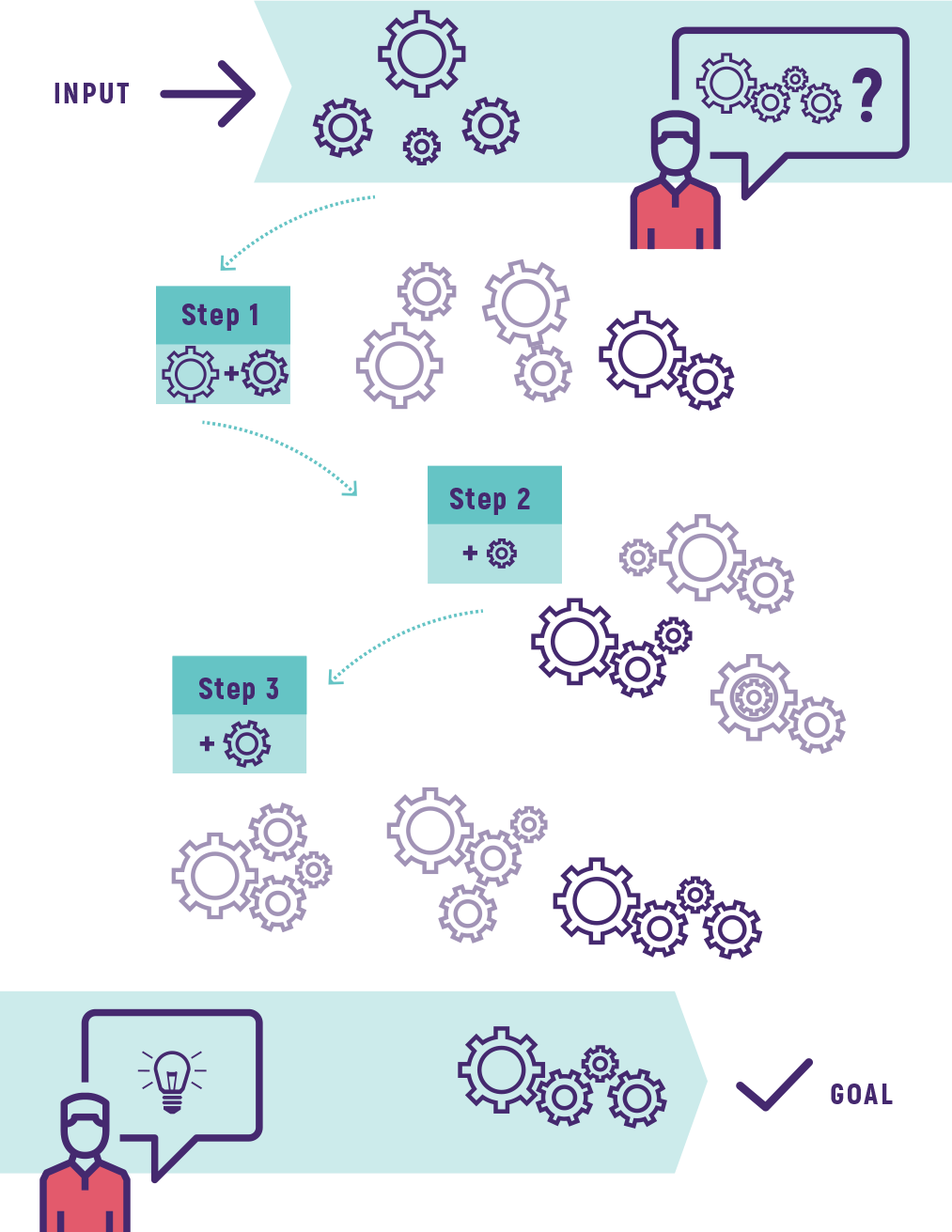Choose PDDL4J, choose Artificial Intelligence for processes
...
Because you have specific needs for your: Processes requiring combinatorial optimization; Goal-oriented processes; Autonomous processes. Because you need: Flexibility; Responsiveness; Rationalization. The PDDL4J solver, created through application of Artificial Intelligence is your key partner and is a tailored solution to ensure optimal improvements for your processes.
What is PDDL4J ?
PDDL4J is a software library embedding Artificial Intelligence algorithms to find solutions for planning problems, that is to say time organized actions to achieve a goal. Solutions to planning problems are "todo lists" named plan representing operational features of actions like who, how, where, when and what to do.
Planning is a discipline of Artificial Intelligence that aims at the development of generic algorithms allowing autonomous systems to choose and organize their actions to achieve a goal by anticipating their effects
PDDL4J uses a description language (Planning Domain Description language) to represent the initial state of the problem, the goal and the list of the available actions. A tutorial, which introduces the PDDL language and how to use the PDDL4J solver, is available here.
What is PDDL4J for ?
PDDL4J is a solver useful for decision problems that can be solved by a sequence of actions (plan). It is based on a declarative approach: the user states a decision problem in PDDL and PDDL4J generates possible solutions. No programming language and/or background is required. PDDL4J has lot of application fields like can be use in many industrial fields as smart homes/data/cities, autonomous systems and robotics, logistics, business processes etc.
The PDDL4J solver - How to use it?
PDDL4J uses innovative algorithms from Automated planning and scheduling research area. It can be rapidly adopted without programming, simply by providing three inputs using high-level abstract language (PDDL) to describe:
The initial state of the problem.
The goal to be achieved.
A collection of possible actions.
The solver then extracts a solution in the form of an operational action plan, which is formatted as a business process and communicated via interfaces ready for integration into the client’s software ecosystem.
The PDDL4J solver - How it's work
Imagine a system where robots have to assemble gears (processes) to accomplish a specific goal. In this system, every event and action could be predefined and hard-coded but this approach has many shortcomings: complexity, combinatory explosion of the possible scenarios, vulnerability to failures and unexpected events etc.
Another approach is to bet on autonomy technologies such as AI planning and let the robots make their own decisions according to their perceptions and the state of the world.
In the situation below, the goal is to assemble the four gears as requested by the technician. Automated planning allows to compute a sequence of actions (plan) to achieve this task from the initial state. What is important to understand here is that if the initial state were different (due to an unexpected event or failure), the system would be able to compute another plan to fulfill the task.

The PDDL4J solver - Strengths and benefits.
In addition to PDDL4J's optimization, rationalization, and flexibility capabilities, its use also allows for decision support, forecasting, and more. You can get a better idea of these benefits by looking at the results of in-company tests. This makes PDDL4J an indispensable tool for any company that wants to improve these processes.
